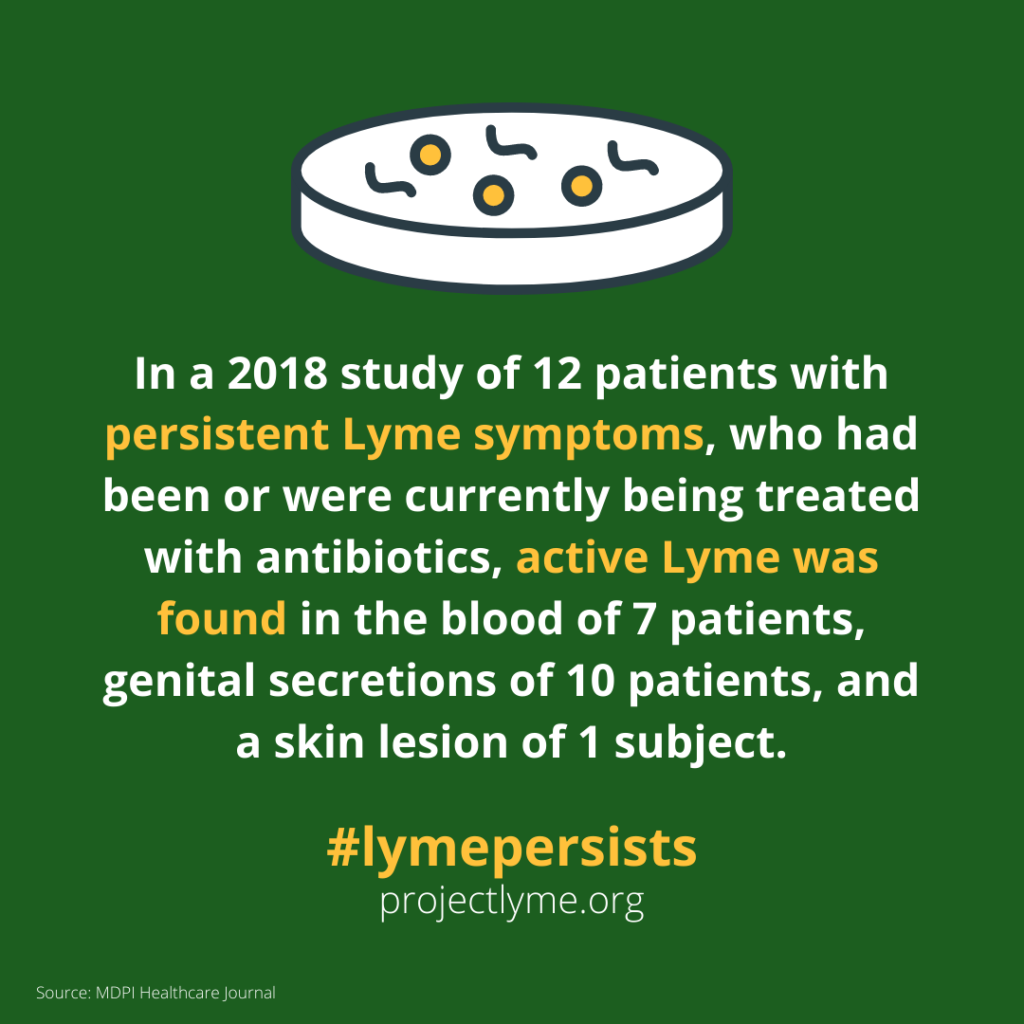100% OF STUDY PARTICIPANTS
CONFIRMED ANTIBIOTIC TREATMENT FAILURE


In 2018 a study was performed on 12 Lyme Disease patients with long term persistent symptoms. All had in the past received the CDC’s recommended 2-4 weeks of antibiotic treatment, and 6 were still being treated with antibiotics.
Positive cultures of Borrelia burgdorferi spirochetes, the causative agent of Lyme, were taken from the blood of 7, from the genital secretions of 10, and from a skin lesion of 1 subject, indicating they were alive and replicating. All 12 patients yielded at least one positive spirochetal culture. Biofilms and round body forms, two forms proven in vitro to resist CDC recommended antibiotics, were also found in some patients.
Cultures from 10 control subjects without Lyme Disease were negative for B. burgdorferi.
Interestingly, there were three patient couples in the study, and the spirochetes in two women’s vaginal cultures were “quite actively motile.” One woman’s vaginal culture even yielded a B. burgdorferi biofilm. Borrelia is a complex organism related to syphilis, and so the authors theorized it may have similar potential for sexual transmission. The potential for Lyme being transmitted sexually isn’t as farfetched as it may sound. In 2020, after years of denial and hardly any research, the CDC acknowledged that Lyme can be passed from mother to fetus, an attribute shared by syphilis.
Studies of mice, dogs, and deer ticks from the 90’s, summarized here, found that Lyme could be transmitted sexually. Obviously this doesn’t necessarily mean humans can transmit it as well, and a study on the potential transmission by humans would be unethical. However, it’s clear that more research needs to be performed on animals, as well as on human couples who already have Lyme Disease. While it wouldn’t be a smoking gun by any means, the detection of the same strain(s) of Borrelia in human couples who are sexually active could help add to the burden of proof.
Key takeaway: Lyme can persist against antibiotics, and the optimal treatment for persistent Lyme disease remains to be determined.